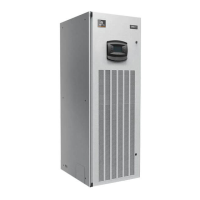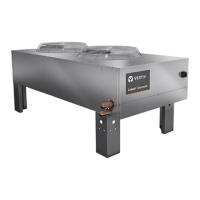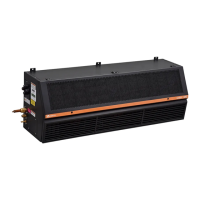81
Vertiv I Liebert LPC I User Manual
5.3
Inspection of electrical connections
The following checks have to be conducted to ensure that the electrical connections are
configured correctly.
• Conduct an overall electrical insulation test. This will help determine the contacts that
are not qualified and therefore, these contacts must be handled appropriately.
Disconnect the circuit breakers and fuses of the control section during the test as the
high voltage can damage the control components.
• Check the contactors before powering-on the unit and ensure that the contactors can
act freely without any hindrance or obstruction.
• Clean the electric and control elements with a brush or dry compressed air to remove
the dust.
• Check the closing of contractors for arcs or any signs of burning. If there is some
discrepancy, replace the contactor if necessary.
• Fasten and fix all the electrical connection terminals.
• Check if the sockets and plugs are in prime condition. Replace the loosened ones.
• Check if the power cables are damaged. To avoid damage, the cables must be replaced
by professionals or qualified technicians.
5.4
Visual Inspection of the control components
Visual inspection as well as appearance check of the control components is crucial to chalk
out any bottlenecks or hindrances that may arise thereby affecting the smooth flow of
operations:
• Check the power transformers and isolation transformers along with the power model.
Test the output voltage of the indoor unit and outdoor condenser.
• Check for signs of ageing on the control interface board. Apart from the control
interface board, inspect the control board and fuse boards in addition to the
temperature and humidity sensor boards.
• Clean the electric control elements and control board with a brush or an electronic dust
removal agent to clear the dust and dirt.
• Check, fasten, and fix the I/O (Input/output) ports at the control interface board
including the connection between the control interface board and control board. Check
and fix the connection between the interface board and the temperature/humidity
sensor board.
• Check the connection between the user terminals (70#, 71#, 37#, and 38#) and the
control interface boards.
• Check the output connections between the control interface board, and various
contactors and solenoid valves for the liquid pipes. Inspect the input connection
between the control interface board and fan overload protector, high pressure switch,

